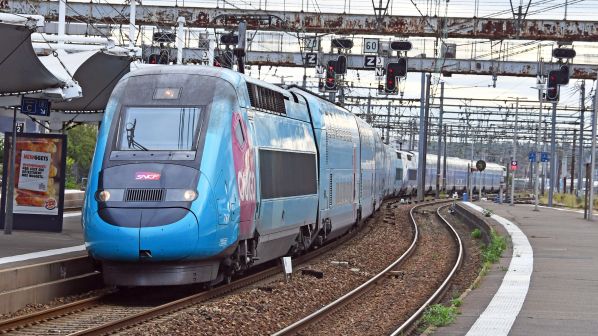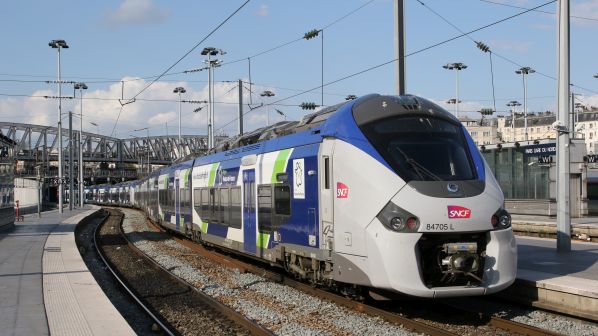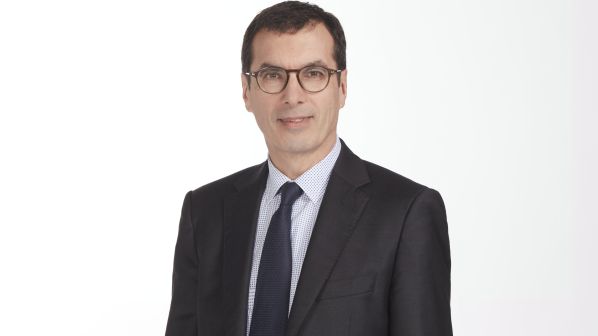MR Jean-Pierre Farandou took over as president and CEO of French National Railways (SNCF) in November 2019, replacing Mr Guillaume Pepy who had held the post for 12 years. Unlike his predecessor, Farandou has spent his whole career with SNCF, moving through a variety of posts, including eight years at the helm of Keolis, SNCF’s operator of urban transport in France and abroad.
Farandou arrives at a crucial time. The national incumbent, which has 270,000 staff worldwide and an annual turnover of €33bn, will shortly face competition for operation of long-distance, regional and suburban passenger services, while a new mobility law will allow regional government to take over ownership of rail infrastructure. At the same time, SNCF’s rail freight subsidiaries are being reorganised to eliminate chronic losses and an ambitious plan has been launched to double rail freight’s market share by 2030 .
Farandou’s first year has been turbulent to say the least. A national strike over pension reforms was immediately followed by the Covid-19 pandemic and lockdown which led to a collapse in rail traffic. After a relative recovery, a new lockdown started on October 30 and SNCF has again responded by limiting services as passengers are encouraged to stay away from its trains.
The impact of Covid was reflected in SNCF’s first half results. Total revenue fell by 21%, contributing to a €2.4bn loss. Intercity passenger operator, SNCF Mobility, which is normally responsible for 20% of total turnover, was worst hit, with revenue down by 57.5%. At the height of the mid-March to mid-May lockdown, SNCF was operating only 7% of TGVs, 16% of regional passenger trains, and 34% of Transilien Paris suburban services. Freight traffic was down by 30%, mainly because building work was halted and the automotive industry stopped, both of which hit steel producers. SNCF reacted by furloughing some staff under a government-financed scheme and delaying or abandoning some investments.
Following the end of lockdown, services returned to near normal in Paris, 87% in the regions and 70% on TGVs. Rail freight returned to 85% of pre-pandemic levels.
“SNCF will continue to invest at a very high level, particularly in renewing the network.”
Jean-Pierre Farandou, SNCF president and CEO
A normal passenger service was announced for the summer holidays, but SNCF was forced to cut some TGV services due to poor reservations. In the end TGVs carried 2 million passengers during July and August, 85% of the 2019 figure, but in order to achieve this, some fares were significantly discounted.
Following the return to work and education, TGV revenue in October 2020 was only 50% of the 2019 level, while TER traffic was down 25% and Transilien services by 35%. Business traffic was much reduced due to the cancellations of trade fairs and a continuation of home working. International passenger services were very badly hit - Eurostar from London to Paris and Amsterdam, for example, carried only 11% of 2019 traffic in September.
The impact of the new lockdown, starting October 30, is likely to be slightly less drastic as great efforts have been made to maintain industrial activity, while schools have remained open; on the other hand commuting will be hit by the government’s message to work from home. There will be little or no leisure traffic with journeys between regions banned.
Farandou says SNCF is finding it very difficult to forecast results for 2021. He says the recent “second wave” of Covid has taken everyone by surprise and the number of passengers travelling in 2021 will depend on the rate of infections and decisions taken by the government to limit its impact on the health system. Farandou hopes that a vaccine will be available by mid-2021 and that life - and rail traffic - can return to normal.
Although current polls suggest that some people are avoiding trains due to concerns about Covid, and using their cars, which add to congestion and pollution, there is significant evidence that the public is even more afraid of using air transport, which is helping rail. “We do not think passengers will be put off using the train - travelling by train presents very little risk of catching the virus,” Farandou says. “Cleaning of trains has been stepped up and all trains are being disinfected once or twice a day. Face masks are obligatory on all of our trains and in stations.”
Relaunch France
On September 3, the French government announced the “Relaunch France” package of aid to boost the economy, which included €4.7bn for SNCF. Of this no less than €4.1bn will go to infrastructure manager SNCF Network to support continuing network modernisation projects. The remaining €600m is for future service relaunches. The government is also helping rail freight by waiving track access charges completely in 2020 and halving them in 2021.
SNCF has not yet requested direct financial aid from the government to support operation, unlike national airline Air France, which received a promise of €7bn in April. In the meantime, SNCF will reduce TGV and Intercités services to match demand, while regional councils, including Île-de-France will decide whether to reduce TER and Transilien services.
Farandou did not comment on a recent report that SNCF has started the process of selling off its freight wagon business Ermewa and the possibility of more asset sales. While central government has promised to take on part of the group’s historic debt - that related to infrastructure building - SNCF is still weighed down by other debts, such as the €5bn built up by Fret SNCF’s chronic losses over the last 15 years.

“SNCF will continue to invest at a very high level, particularly in renewing the network,” Farandou says. “But the Covid crisis has had an inevitable effect on less urgent projects – we have agreed a slowing in the delivery of new TGV sets with Alstom, postponed refurbishment of maintenance depots and put off less urgent training programmes.
“TGV services may also face a ‘structural reduction’ in business traffic due to an increase in home working and the increased use of video conferencing. This has already been an effect of Covid and SNCF has had to adjust fares and marketing to fill seats with more private and leisure traffic.”
The government bailout for Air France was conditioned on the abandonment of all domestic flights taking less than 2h 30min where there is an alternative by rail such as Paris - Nantes and Paris - Bordeaux. Although a welcome benefit for SNCF, the numbers of passengers concerned is relatively small compared with the capacity of trains on these routes - a pair of TGV Duplex sets can carry over 1000 passengers - five times or more the capacity of equivalent planes.
Farandou confirmed that he wished to see SNCF go back to its core activities of running trains in France. “What the public want is trains which run on time, are comfortable and well maintained, stations are comfortable, and it is our job to provide this,” he says.
However, he flatly rejected the idea that the group might sell its road haulage subsidiary Geodis, which accounts for about a quarter of group revenue, arguing that diversifying activities also diversifies risks.
One new international enterprise that is proceeding as planned is the introduction of low-cost TGVs in Spain, which will run as Ouigo as in France. “Our market research showed clearly that the Spanish market wants low cost, low price trains,” Farandou says. Although Covid throws some doubts over the launch of services, Farandou believes that a relatively quiet start on the Madrid - Barcelona route will allow experience to be gained during 2021, thus helping later launches on the Madrid - Valencia and Seville routes. SNCF is expecting 60-70% occupation initially, rising to 85-90% as services build up.
Strikes
On his arrival in the post of CEO in November 2019, Farandou made a series of speeches in which he said that he wished to renew contacts with staff and bring back “social peace.” At the same time, he condemned wildcat strikes as “unacceptable.” In the difficult atmosphere of the time, he said that he wished to improve everyday conditions for railway personnel, saying that some of the buildings currently in use were “unfit for purpose.” He also said that he agreed with passengers that there should be more staff at ticket windows; this comes after years of stress on the importance of the internet, and unpopular station destaffing.
In July 2020 Farandou presented the “Everyone is SNCF” plan, the stated aim of which is to make SNCF a “champion of sustainable mobility” by 2030. The plan concentrates on four themes:
- people - making people want to work for SNCF, with an accent on lifetime retraining
- decentralisation - 11 regional coordinators have been appointed to liaise with regional government, industry and other organisations, then produce regional development strategies
- the environment - including reducing energy bills by 25% within five years, and emissions, and
- digitalisation - 5000 staff and €2b in turnover, with investment in training for everyone, especially in data collection.
Farandou emphasises the importance of decentralisation. “SNCF is too centralised at present,” he says. “Everyone is SNCF will bring the company closer to the regions and their policies.” Clearly SNCF will only win TER operating contracts if it sees eye-to-eye with regional councils.
SNCF and successive French governments have argued for delays to competitive bidding to operate passenger services, and French trade unions are openly hostile to the idea. However, in the interests of fair competition and the competitiveness of railways, the EU has pushed through the process. In 2019 non-subsidised long-distance services were opened up to competition and Trenitalia intends to start Paris - Milan high-speed services in 2021. The Railcoop cooperative intends to run domestic intercity services on routes SNCF no longer operates in 2022.
According to EU rules, subsidised public service obligation (PSO) services - regional and city suburban services - must be tendered from 2023, although the French government has encouraged trial opening before this date. However, fewer than half the French regions have started this process. These regions have stated that they expect to see cost reductions of up to 30% and improvements to services.
French companies, including SNCF subsidiary Keolis, have wide experience of bidding for contracts and operating trains outside of France and Farandou says SNCF’s strategy will be to bid for all of the contracts, starting with the central government’s tender for Intercités services from Nantes to Bordeaux and Lyon. “The terms of the contract as far as rolling stock and timetables will be quite restrictive,” he says. “But SNCF will be able to innovate in several fields. However, it is not possible to give any details.” Farandou also believes that the summer 2021 limit for bids may slip due to Covid-19.
As far as regional services go, tenders have already been issued by the Sud-Paca, Grand Est and Hauts-de-France regions. Farandou rejects the many comparisons between SNCF’s operating costs for regional services with those in Germany.
“Germany has denser populations than in France and services are therefore less frequent and resources used less intensively,” he says. “SNCF can reduce its costs and win contracts - many of the recent contracts signed with the French regions involve cost reductions over a period of several years. Improving services will above all depend on improving the state of the network, something which is being carried out at present.”
Green Speed
SNCF holds majority stakes in both Eurostar, which operates high-speed trains from London to Paris and Amsterdam, and Thalys which serves Paris, Amsterdam and Cologne. Incidentally Farandou was behind the creation of Thalys in 1997. In 2019 it was announced that Eurostar and Thalys would be merged in 2021 under the new brand, Green Speed. Farandou confirmed that the merger would go ahead as soon as possible in order to benefit from synergies and economies of scale.

that are on time, comfortable and well maintained. Photo: Keith Fender
With Thalys’ fleet approaching 30-years-old, one priority is to order common rolling stock. Farandou also confirmed that a new direct service between London and Germany would be an idea for the merged company.
On July 14 2020, French president, Mr Emanuel Macron, acknowledged rail’s contribution to reducing pollution and global warming, and called for the relaunch of overnight trains, most of which were withdrawn in 2017 for financial reasons, to safeguard minor branch lines, and the relaunch of rail freight. The government has since asked SNCF to restore night trains to the Paris-Tarbes/Hendaye and Paris-Nice routes by 2022. This will initially involve reviving and modernising 40-year-old Corail coaches.
“We do not think passengers will be put off using the train - travelling by train presents very little risk of catching the virus.”
Jean-Pierre Farandou
SNCF is already planning to launch a market study into routes and pricing and is investigating both second-hand and new rolling stock. The company will also explore relaunching international services such as Paris - Berlin with partners such as DB. “We will be targeting a new generation of travellers who wish to avoid plane travel and do not own cars to use these trains,” Farandou says.
Questioned on SNCF’s research into new technology such as automatic train operation (ATO), Farandou says ATO is likely to initially be used to move empty stock and for shunting in freight yards. “ATO on main lines is likely to be linked to the development of geo-localisation of trains and the installation of ERTMS,” Farandou says. “ERTMS is extremely important for the solution of capacity problems.”
The first major use of ERTMS will be on the Paris - Lyon high speed line, which will support an increase in capacity from 13 to 16 trains per direction per hour with work on this project already underway.
Overall Farandou has said that he is very optimistic for the SNCF group over the next 10 years, in spite of the Covid-19 pandemic. He has described Covid-19 as a “meteorite” which has hit the SNCF planet, and which may affect SNCF for two years, but which has not blown the planet off course.
Jean-Pierre Farandou
Farandou was previously executive chairman of Keolis before taking over as president and CEO of SNCF on January 1. A graduate of engineering from Mines ParisTech, Farandou began his career with US mining company Amax before joining SNCF in 1981.
In 1993 he was appointed project manager for the launch of the Paris - Lille high-speed line, before going on to create the legal structure for Thalys International, where he was also general manager between 1993 and 1998.
Farandou led the SNCF Rhône Alpes region between 2002 and the end of 2004, when he joined Keolis, initially as head of Keolis Lyon, which operates bus, metro and tram services in the French city.
In 2006 he was appointed director of SNCF Proximités, before becoming deputy managing director of SNCF Epic in June 2012. He was appointed chairman of Keolis in August 2012.

